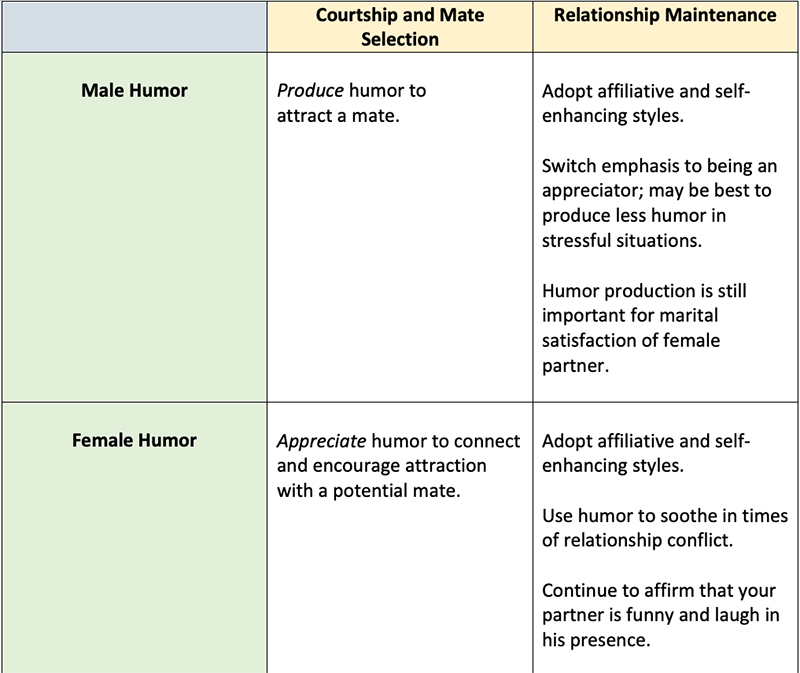
Side-Swiped: Evolutionary Mismatch and Sex Differences with Mobile Dating
“With the rise of the mobile dating app, we are in evolutionary unprecedented waters.”
~ Justin Garcia, Kinsey Institute
Set in the cities and college campuses of Austin, New York City, Santa Cruz, and Plainfield, Illinois, HBO laid bare the lives of Gen Zers and their use of dating apps in the 2018 documentary, “Swiped – Hooking Up in the Digital Age.” Based on what they uncovered, HBO may have intended “swiped” as a metaphor for being disappointed or blind-sided, in addition to noting the addictive action built into the phone and app design.
A Generation Built to Swipe
Gen Zers (up to 24 years of age) and a small number of Gen Y.1 (25-29 years of age) were exposed to the internet and computers from a very young age. It is natural (if not cognitively conditioned) to connect to their world and others through a display screen. But Tinder, Snapchat, Instagram, and Facebook deliver and create a reality that sometimes interferes or competes with real-life (IRL). In “Swiped,” we see scenes of young people in a crowded New York City bar – but their attention is only on their phones. One HBO interviewee said folks are “almost zombified, looking at their phones even when all together in the same space.” “If you called someone these days, you would probably get labeled a psychopath,” joked another young man.
“Swiping” Market is Huge
Tinder estimated there were 1.5 billion swipes per day in 2018. As a part of a 2.5 billion dollar dating industry, 40 million Americans use online dating. Adults age 18 to 30 spend an estimated 10 hours a week on dating apps. One out of two single people in the US has a profile on a dating app.
We Evolved in Small Groups with Few Potential Mates
Dating by mobile device may conflict with our evolutionary hard-wiring. In an interview for “Swiped,” evolutionary psychologist David Buss explained the problem with dating apps: “We evolved in the context of small groups ranging from 50 to 150 with limited geographical mobility. You would encounter perhaps a few dozen potential mates in your entire lifetime. We take this small-group dating psychology and transplant it in the modern world with thousands of mates, and it triggers this short-term mating psychology in a way that never would have been triggered ancestrally.” And with all of these options, the value of each person in the mating economy goes down.
Evolutionary Mismatch
The field of evolutionary psychology has become more interested in these instances of modern “evolutionary mismatch.” “Since organic evolutionary processes take a long time to effect change, our minds are better suited to ancestral, pre-agricultural contexts than they are to modern contexts,” says Glenn Geher and Nicole Wedberg in their book Positive Evolutionary Psychology (2020). Studies of pre-agricultural forms of diet and exercise (paleo fitness and movement) and ways to increase “social capital” in our cities are examples of solution-focused evolutionary psychology. Mobile apps as currently designed may not be part of the solution.
“We are engaging ancient biological parts of our behavior, but the platform is novel and unprecedented. With the rise of the mobile dating app, we are in evolutionary unprecedented waters,” cautions Justin Garcia of the Kinsey Institute.
A Picture is Worth a Thousand Deceptions
The dating app photo, especially on Tinder, is everything. Physical appearance overwhelms all other information and takes on a disproportionately larger role. As described in the film by clinical psychologist Jennifer Powell-Lunder, mating strategies are evident on the apps: “men present in a very stereotypical male way – providers, hunters, puffing up their chests. And women present in more sexual ways.” Powell-Lunder identified a phenomenon brought on by the relative anonymity of the mobile app. She called it the “Clark Kent syndrome.” “Mild-mannered average guys get to feel like a Superman, powerful and sexually aggressive.” This kind of dating is all “performative,” she says.
Male-Female Difference
Men and women use these apps differently. Hinge CEO and founder, Justin McLeod, was interviewed in the HBO film: “Women are more selective. On the whole, a majority of women are looking almost exclusively for a relationship on these services. The majority of the men are primarily looking to hook-up.” Those looking for a hook-up have the upper hand in this new world. Women in the documentary lamented: “Guys will have one girlfriend per network (Instagram, Twitter, Facebook, and Snapchat).”
Traditional Romantic Relationship vs. a Hook-Up
In a lecture to the Feminist Student Association at the University of Indiana, Garcia presented data from college students about which type of relationship they preferred — a traditional romantic relationship (TRR) or a hook-up. Sixty-three percent (63%) of the men said they preferred TRR, and 34% said they favored a hook-up. Eighty-three percent (83%) of the women preferred TRR and just 13% wanted a hook-up. One woman in the documentary said, “I want a boyfriend; I don’t want a fuck buddy.” CEO and founder of Tinder, Sean Rad noted “80% of users are looking for a serious relationship.” This is about right for the women, but not overall. Rad might be exaggerating a big to make Tinder look a bit nobler. In the film, females actively looking for hook-ups on Tinder were derisively called (by the men) “tinderellas.”
Men and Women Differ in Comfort Level of Hook-up Behaviors
Garcia also reported on women’s comfort level for certain hook-up behaviors compared to what was attributed to them by men (on a scale of -5 to +5). Men overestimated a women’s comfort level with sexual intercourse and oral sex (both giving and receiving) by a significant margin.
Design and Addiction of the App Architecture
The architecture of dating apps is built for split-second decision-making – are you “hot or not?”
Gamification is a well-researched design feature. Swiping produces unpredictable yet frequent rewards – intermittent reinforcement based on the operant conditioning studies of B.F Skinner. (Pigeons are the precursors to swiping-obsessed GenZers.) Visual pop-ups show a match with fanfare and a dopamine rush. Yet, anticipation is a greater rush than the reward. Like gambling addiction, swiping or sexual compulsion is more of a “high” than a genuine pleasure.
Effects On Emotional Health and Relationship Satisfaction
“I hate it that everything depends upon how you look,” said a young woman from Austin. One clinical expert interviewed by HBO said, “mobile apps cause us to feel like we are always dating, always promoting your product.” A black woman from New York City spoke of emotional abuse from an online relationship. “I was heartbroken. I feel like he treated me like an object almost.” A college student in Santa Cruz gave a male perspective: “if you do care, you have to not show it; you act like you don’t.”
Women overall are wary and disappointed in the digital online environment. Men are pleased and discouraged by dating using the apps.
The Hinge Difference?
McLeod says Hinge is “designed to be deleted.” Unlike his swipe-centric rivals, McLeod doesn’t want his user base to stay endlessly glued to the app. McLeod has drug addiction in his history – he understands this problem. McLeod described Tinder “as a numbers game where users were betting to find a match after never-ending swipes. It just turned into a game in a casino.” McLeod realized that it was time for love-seekers to put themselves out there. “It is about vulnerability and opening up and softening your edges.”
Hinge no longer conforms to the swipe template. Instead, users (as of in 2019) have to answer a choice of three prompts that encourage sensitivity. Instead of the “hot selfie,” Hinge encourages “photos that lend themselves to a conversation.”
Hinge Inspired Modern Love
McLeod’s own love story is depicted in Episode 2 of Amazon’s highly praised Modern Love. Dev Patel’s character builds an app called Fuse and reconnects with his soulmate just before she was supposed to marry another man. In real life (IRL), McLeod flew to Europe and declared his love for his long-lost soulmate, Kate, one month before her wedding to another man. McLeod and Kate got married and have a child. McLeod’s real love story informs his approach to Hinge, although Hinge has been fully acquired by dating monopolist IAC Match Group, which also owns Tinder.
Does Bumble Empower Women?
“Bumble is a site where only women are going to make the first move,” explains a female Bumble executive interviewed for the documentary. But does Bumble empower women? Zoe Strimpel, a dating historian and columnist for The Sunday Telegraph, said, “Bumble is just codifying that women have to do more work – have the burden of dating – the communication and emotional work.” Regardless of the questionable premise (IMO) that women have “the burden of dating,” Strimpel “does not see how Bumble fixes the mistakes that Tinder has made.”
Gay Apps Maybe Provide a Needed Service
The documentary explains how dating apps and the internet generally have given gay men and lesbians more access to each other. Garcia said the internet is good for the LGBTQ community in that regard. But one man complained that it has cut down on “cruising” in person, which he described as fun and, more importantly, part of gay culture. One gay Austinite said that when he sees a guy in a bar, he immediately goes to Grindr to find out more about him and even communicates to him through the app as he stands just 30-feet away. One gay site gets a favorable mention. SCRUFF is supposedly a top-rated and reliable app for gay, bi, trans and queer guys to connect.
Physical Risk in the App Ecosphere
Online-related sexual assault has multiplied over the years. According to general news and wellness site, Phactual, one out of every ten sex offenders uses online dating to meet people. A 2018 Buzzfeed article told the story of an alleged “Tinder Rapist” who said he felt entitled to sex from a female he’d met on the dating app because “she wanted it and the Tinder app was for that.”
“Are dating apps contributing to rape culture?” Mandy Ginsberg, CEO of IAC Match Group, avoided answering that question in the documentary, citing the company’s focus on safety tips for women. (IAC Match Group owns Match, Tinder, Plenty of Fish, OK Cupid, Black People Meet, Senior People Meet, and now Hinge.)
Revenge Porn is a Nasty Artifact
As starkly depicted in the HBO documentary, sexting is also a risk. One in 25 Americans has been the target of revenge porn – the unauthorized use and spread of nude photos. Instagram photos of all types may lend themselves to reputation damage, even affecting employment and careers. Tinder co-founder and CSO Jonathan Badeem seemed sympathetic but had no concrete plans (at the time of filming by HBO) to stop revenge porn or reduce the incidence of sexual assault associated with the app.
Future of the Apps and Mobile “Dating” Experience
“The use of apps will not slow down because there is too much money to be made,” according to Adam Alter, a social psychologist at New York University. He added, “the apps are getting better and better at designing experiences that are addictive.” Furthermore, virtual and augmented reality apps are coming!
Through Eyes of Alex and Kyle
Midway through the documentary, we are introduced to an adorable couple in New York City. Alex and Kyle found each other on an app and felt authentically connected as friends and lovers. They had great simpatico and playfulness — enough trust and comfort to try to be with a third person. (Alex, the woman, is a self-proclaimed “heteroflexible”). They swiped together as a couple, looking for a woman to join them. It was exciting and fun. Their coupling seemed to work. At the end of the documentary, we see them for the third time. Kyle and Alex sat on the bed and reflected on their relationship together. Now, it seems, they are not a couple.
But Love is Sweet
Kyle became distant, and he does not know why. Kyle hooks-up with other women on Tinder. Alex seemed sad and resigned. She wanted a real relationship with Kyle. She tells the camera that expressing love is sweet. She can have other sexual encounters if she wants to (and does), but we get the impression that she just wanted a committed relationship with him.
“Tinder Exhausts Me”
Alex finally says, “Tinder exhausts me but I use it to judge people, and I like to swipe. I like doing the swiping, I always have.” “Nothing good happens from Tinder,” says Kyle in response. Then, Alex turns to Kyle and gives him a penetrating look, “we met on Tinder.”
Summary
- Digital apps produce a vastly different environment for short-term mating from what existed in our evolutionary past.
- The focus on physical looks has dramatically increased in the digital environment. This change is especially significant in the overall mix of female sexual strategies. Short-term mating for women has always put more emphasis on physical attractiveness, facial symmetry, and a man’s v-torso. A woman’s predominant long-term strategy, which still operates on the apps, emphasizes character, resources, and commitment.
- Young women are having a bit more casual sex because of this environment, but they are not necessarily more satisfied. (There was only one woman depicted in “Swiped” that seemed centered and comfortable with a non-monogamous lifestyle.)
- Though women are experimenting more with casual sex and non-monogamy, 80% of women want or use the apps in hopes of developing a long-term relationship. This confirms the hard-wired difference of mating strategies between men and women.
- Few long-term relationships come from dating app hook-ups.
- Women overall are wary and disappointed in the digital online environment.
- Men are pleased and discouraged by dating using the apps.
- HBO’s documentary does not explore the sex-ratio difference on college campuses (more women than men) that has also contributed to changes in the female approach to casual sex and intrasexual competition between women, and is the cause of multiple partners for men.
- Women rightly fear rape and other kinds of abuse (physical and emotional) or assault.
- Reputation damage and revenge porn have dramatically increased with the use of dating apps and the reach of the internet.
Please Note: Your comment may take up to 12 seconds to register and the confirmation message will appear above the “Submit a Comment” text.





